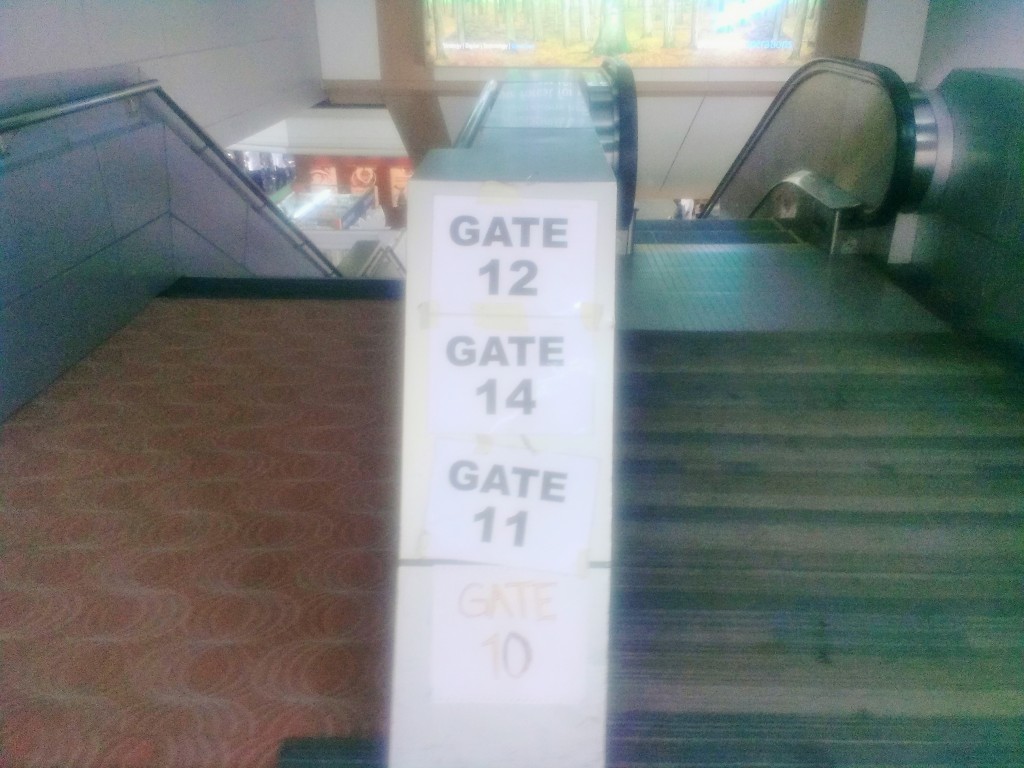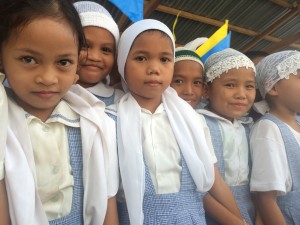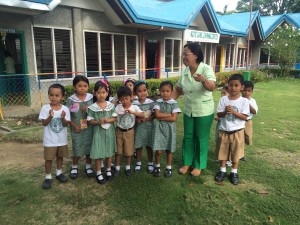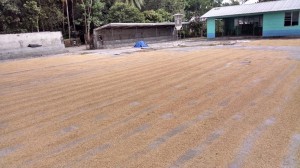 Earlier in the day we
Earlier in the day we 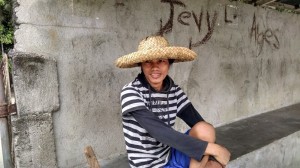 were in a southwestern region of Mindanao called the Sultan Kudarat province and it became a became very special learning experience. We met with some of the elected officials and village elders and they gave us a pretty thorough briefing on the state of affairs within their barangay. They appeared especially proud when they spoke of some of the new ideas that are being implemented to with the goal of empowering the local farmers with additional market options for their produce. With 1330 households and a growing population of 6515 people to feed, the farmers have decided to take a more proactive role they have in the past, when it comes to influencing the supply chain. In order to maximize the profit potential of the individual, the barangay farms have taken the measures to control of the pricing of the goods by regulating the output and production of some of the supply. The main crops in the area that the local farms produce are palay, banana and corn. There was usually enough food to go around, the farmers came to realize that planting crops all at the same time and reaping a mass harvest may be easier for major corporations to process, the sheer volume of produce has a direct and lowering effect on the pricing of the goods. A change in the process was forthcoming if there was to be a more equitable transfer of goods and services. These crops are now being planted on a rotational basis so that selected portions of the farmland can be harvested weekly or essentially as needed. The barangay officials said this change in economic paradigm has had a positive effect on the local farmers lives in that because market saturation of goods is mitigated by the planned harvesting period, a minimum of wasted or excess product has increased the of selling power for the farmers. This has helped to provide an ancillary income stream for the locals by opening alternate selling venues for the producers, such as farmers markets on weekends.
were in a southwestern region of Mindanao called the Sultan Kudarat province and it became a became very special learning experience. We met with some of the elected officials and village elders and they gave us a pretty thorough briefing on the state of affairs within their barangay. They appeared especially proud when they spoke of some of the new ideas that are being implemented to with the goal of empowering the local farmers with additional market options for their produce. With 1330 households and a growing population of 6515 people to feed, the farmers have decided to take a more proactive role they have in the past, when it comes to influencing the supply chain. In order to maximize the profit potential of the individual, the barangay farms have taken the measures to control of the pricing of the goods by regulating the output and production of some of the supply. The main crops in the area that the local farms produce are palay, banana and corn. There was usually enough food to go around, the farmers came to realize that planting crops all at the same time and reaping a mass harvest may be easier for major corporations to process, the sheer volume of produce has a direct and lowering effect on the pricing of the goods. A change in the process was forthcoming if there was to be a more equitable transfer of goods and services. These crops are now being planted on a rotational basis so that selected portions of the farmland can be harvested weekly or essentially as needed. The barangay officials said this change in economic paradigm has had a positive effect on the local farmers lives in that because market saturation of goods is mitigated by the planned harvesting period, a minimum of wasted or excess product has increased the of selling power for the farmers. This has helped to provide an ancillary income stream for the locals by opening alternate selling venues for the producers, such as farmers markets on weekends.
These pictures are of a local farmer and the palay, or rice that he drying. The process can last between 4 to 6 hours with as farmers contend with the occasional threat of brief but violent gusts of high wind.



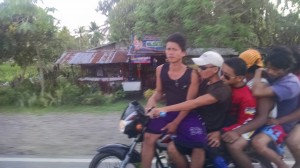
 a mind reader; she had a large bottle of water with her and handed it to me with a smile. I was told to get some rest and that we would be meeting at 7 pm. I lugged my backpack up the flights of stairs and entered my room. There I saw my roommate laying on the bed in the dark. The thought of sleep entered my mind but I quickly abandoned this idea, how could I sleep after arriving to a new land, I wanted to explore! I asked her why she was in bed when she could be out exploring. She sick without medicine. As I started un packing the thought of shower crossed my mind, but I realized I had forgot to pack shampoo ( I always forget something!). This was it, my chance to meander around the neighborhood, and looking for a pharmacy. I dodged cars, motorcycles and pedestrians; I was on a mission. As I walked from sidewalk to sidewalk I smelled the faint aroma of fried food, mixed with vehicle exhaust in the humid
a mind reader; she had a large bottle of water with her and handed it to me with a smile. I was told to get some rest and that we would be meeting at 7 pm. I lugged my backpack up the flights of stairs and entered my room. There I saw my roommate laying on the bed in the dark. The thought of sleep entered my mind but I quickly abandoned this idea, how could I sleep after arriving to a new land, I wanted to explore! I asked her why she was in bed when she could be out exploring. She sick without medicine. As I started un packing the thought of shower crossed my mind, but I realized I had forgot to pack shampoo ( I always forget something!). This was it, my chance to meander around the neighborhood, and looking for a pharmacy. I dodged cars, motorcycles and pedestrians; I was on a mission. As I walked from sidewalk to sidewalk I smelled the faint aroma of fried food, mixed with vehicle exhaust in the humid  air. I began to see fried chicken everywhere, not something I necessarily crave on a hot day. After completing my mission at the pharmacy, out of desperation I purchased two pieces for 40 pesos. I practically inhaled them when once I returned to my room. While I sat on my bed I reflected, is this place really that dangerous, it seemed so calm, and I felt safe. Funny the initial thoughts we have. I wonder how I will feel at the end of the two weeks.
air. I began to see fried chicken everywhere, not something I necessarily crave on a hot day. After completing my mission at the pharmacy, out of desperation I purchased two pieces for 40 pesos. I practically inhaled them when once I returned to my room. While I sat on my bed I reflected, is this place really that dangerous, it seemed so calm, and I felt safe. Funny the initial thoughts we have. I wonder how I will feel at the end of the two weeks.